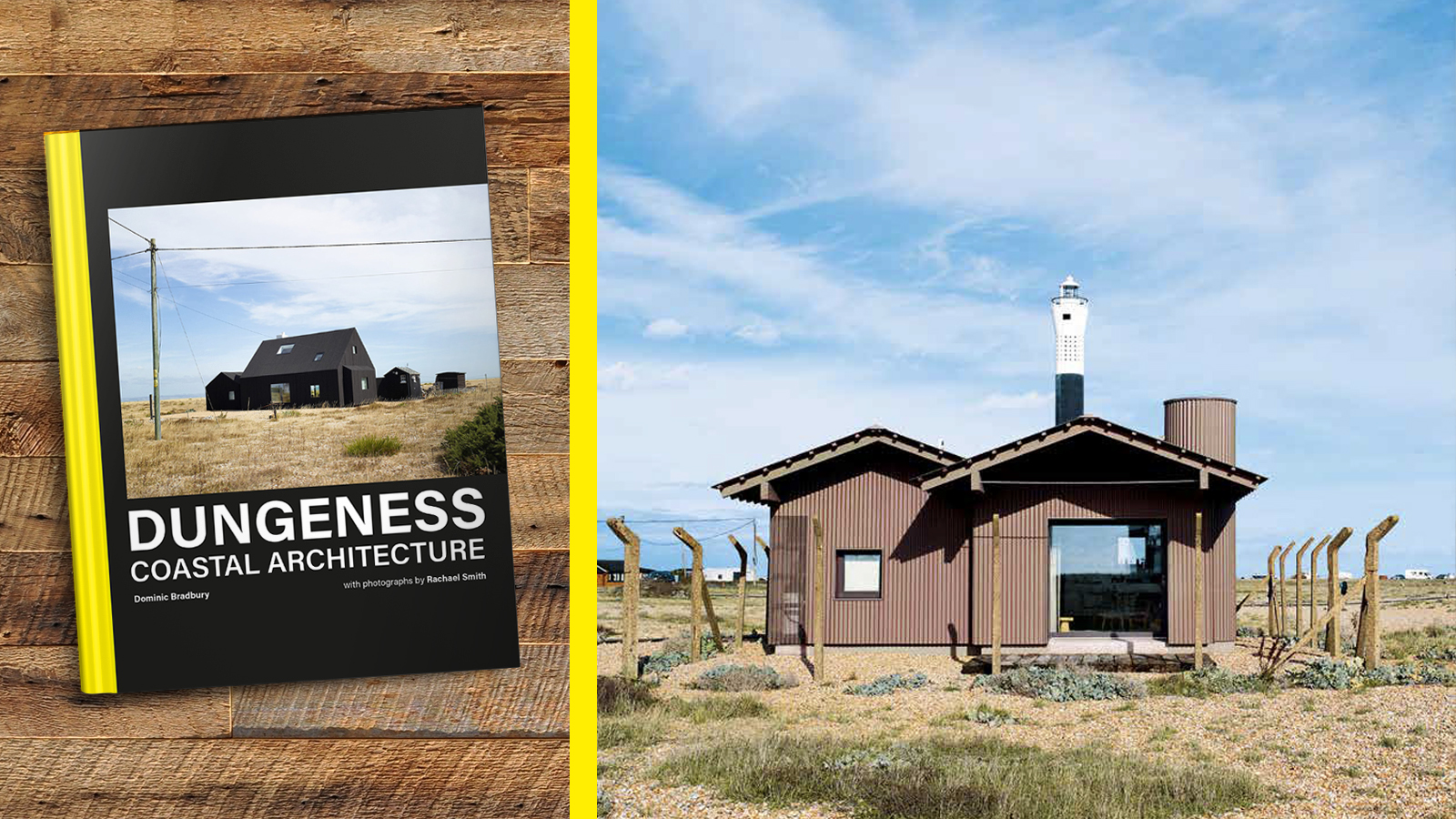The Kent coastal strip of Dungeness is a unique environment. Harshly vulnerable to the elements yet protected from inland development. Explore this beautiful area with design writer Dominic Bradbury’s new book Dungeness.
Radar
Designers: Fiona Naylor and Michel Schranz
There is something deeply soothing about the experience of spending time in Radar. This modestly scaled but thoughtfully conceived building sits on the foreshore, making it one of the closest houses to the sea itself, lending it a uniquely escapist quality. This is enhanced by
the way it gently turns it back on the village and focuses instead on a panorama of the shingle and the Channel, framed by a large picture window. Sitting down, facing this open vista, with the ships and clouds sailing past, feels like looking at a shimmering painting or a light box. It is mesmerizing.
‘There is a sense of delight in it’, says designer Fiona Naylor, who collaborated on Radar with
architect Michel Schranz. ‘It’s about things that you experience and touch and I love it when
people stay at the house and discover these things for themselves. With the design, we just
wanted everything that you experience here to be a pleasure and it is very calming. For me, it has this very marked psychological effect when I walk into the house and I think it’s really become part of the landscape.’
Over recent years Naylor has given fresh life and relevance to a handful of buildings in Dungeness, including the Coastguard Station, which is one of the very few other buildings
directly visible from Radar. These earlier projects were all about converting and adapting existing buildings, with Radar marking Naylor’s first and only new-build project here, partly because the original radar station on the site – also known as the Decca building – was literally falling to pieces.
The original, prefabricated double shed here was used by the Decca Radar Company as a research base, with a distinctive collection of equipment perched upon platforms mounted on the roof and the ancillary towers alongside. Some labelled it the ‘Marconi Wireless Shed’, based on the idea that Guglielmo Marconi might have used the very same site as a radio signal station during the late 1890s. What is certainly true is that by the late 1980s, when the shed could be glimpsed in some of Derek Jarman’s Dungeness Super 8 movies, it was starting to collapse, with pieces of equipment regularly tumbling onto the shingle, especially during a storm.



